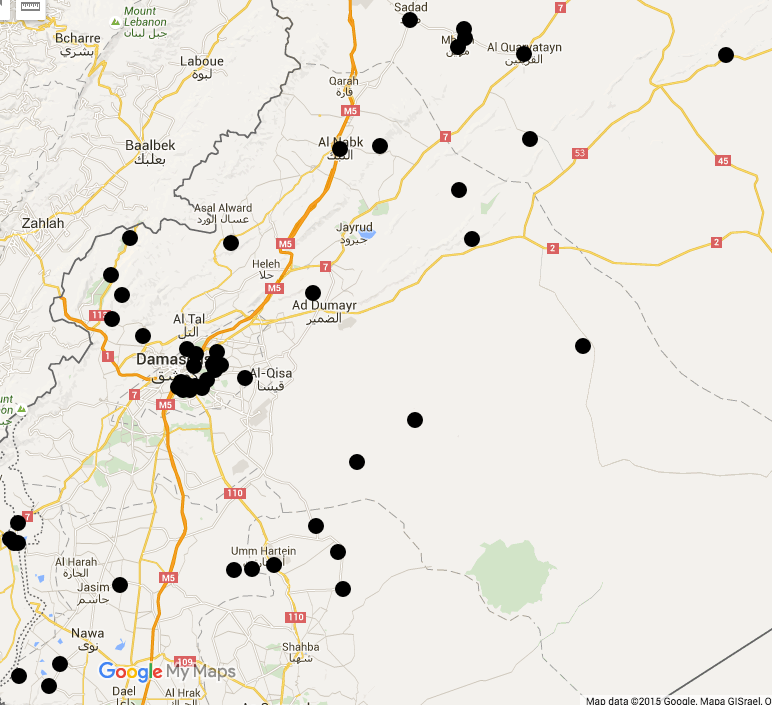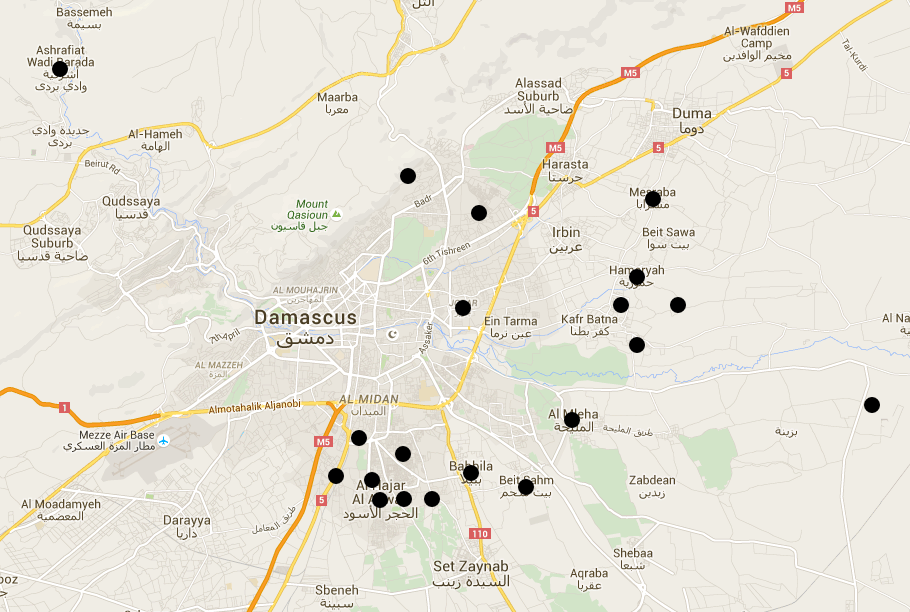
Abstract: Much attention has been given to the Islamic State’s military and governance activities in northern and eastern Syria, but there has been less focus on its slow and steady growth in the southern theater. Since July 2013, it has been building a presence in a number of locales around Damascus, with the eventual goal of taking the city. While such aspirations are still far beyond the group’s military capabilities, it has actively rolled out soft-power strategies. Focusing on the Islamic State’s activities in the north and east of Syria could prevent a complete understanding of what it is attempting to accomplish.
The headlines from the Syrian war have focused for the most part on the north and east of the country. The media has tended to concentrate its attention on, for example, efforts by Kurds to push back against the Islamic State or Russia’s air campaign. There are good reasons for this. First, it is difficult for Western reporters to cover the fighting in other areas of the country. In addition, the north and east are where many of factions fighting the regime of President Bashar al-Assad, whether revolutionary, Islamist, or jihadi, have been strongest. It is also where territory was first taken from the regime and where jihadi groups such as Jabhat al-Nusra control parts of Idlib governorate and the Islamic State has set up its self-styled Wilayat al-Raqqah and Wilayat al-Khayr (Dayr al-Zur).
Despite this current focus on the north and east, the southern theater could be more important to the outcome of the Syrian civil war. The regime is based in Damascus, the capital of Syria. Damascus is one of several seats of the former caliphate, and occupying it would provide immense legitimacy. While Damascus is unlikely to fall in the near term, the continued buildup of the Islamic State’s assets and presence in the surrounding area could provide a longer-term threat not only to the regime and the rebels fighting it, but also for Jordan and perhaps Israel.
To better understand the history, evolution, capabilities, and future trajectories of the Islamic State in southern Syria, this article will examine the group’s activities in the area starting with its first attempt at building up its network in 2013. We will argue that the ultimate goal is to control Damascus.
Click here to read the rest.
—
Here are also two maps I created to show where IS has been active in its Wilayat Dimashq (which tracks with the borders of the historical Jund Dimashq as I note in the article) in general and the Damascus region in particular:


Check out my new article in The CTC Sentinel co-authored with Oula Alrifai: "The Islamic State in Southern Syria"
Posted on
